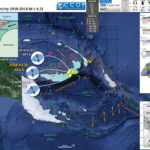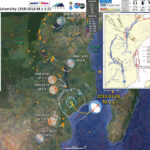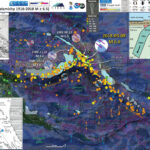Well, those earthquakes from earlier, one a foreshock to a later one, were foreshocks to an earthquake today! Here is my report from a couple days ago. The M 6.6 and M 6.3 straddle today’s earthquake and all have similar…
Earthquake Report: New Britain
The New Britain region is one of the more active regions in the world. See a list of earthquake reports for this region at the bottom of this page, above the reference list. Today’s M 6.6 earthquake happened close in…
Earthquake Report: Gorda plate!
I was at a workshop to develop a unified strategy for research and monitoring in the Klamath River estuary (led by the Yurok Tribe, Andreas Krauss) yesterday and missed feeling the first of two M 4.6-4.7 earthquakes. I was presenting…
Earthquake Report: Malawi & Mozambique
Busy day today. This is my second earthquake report today. This report is about a M 5.6 earthquake along the Malawi Rift (MR) system, part of the larger East Africa Rift (EAR) extensional plate boundary. The EAR is currently the…
Earthquake Report: New Ireland!
We had an M 6.8 earthquake near a transform micro-plate boundary fault system north of New Ireland, Papua New Guinea today. Here is the USGS website for this earthquake. The main transform fault (Weitin fault) is ~40 km to the…





